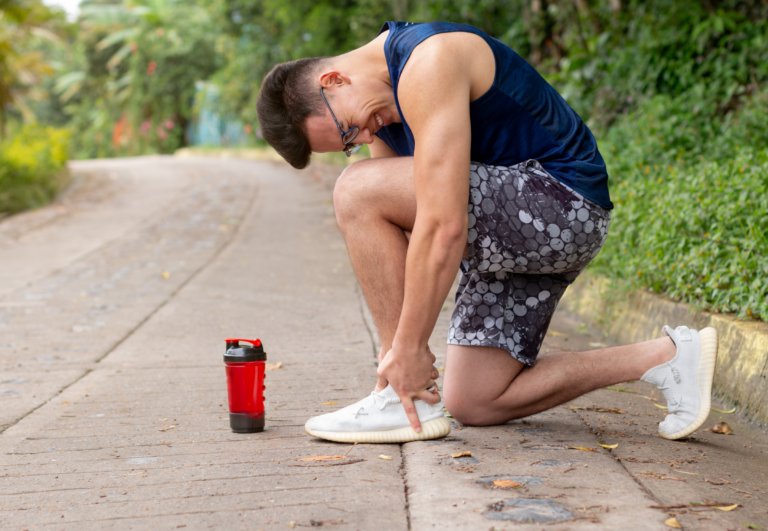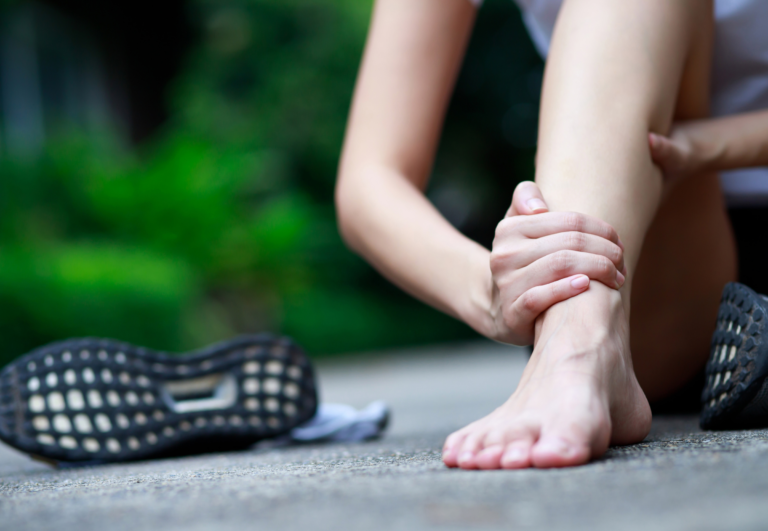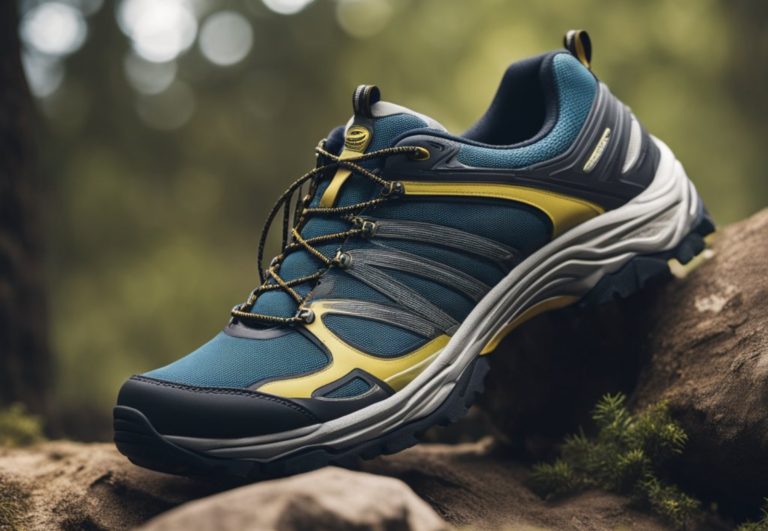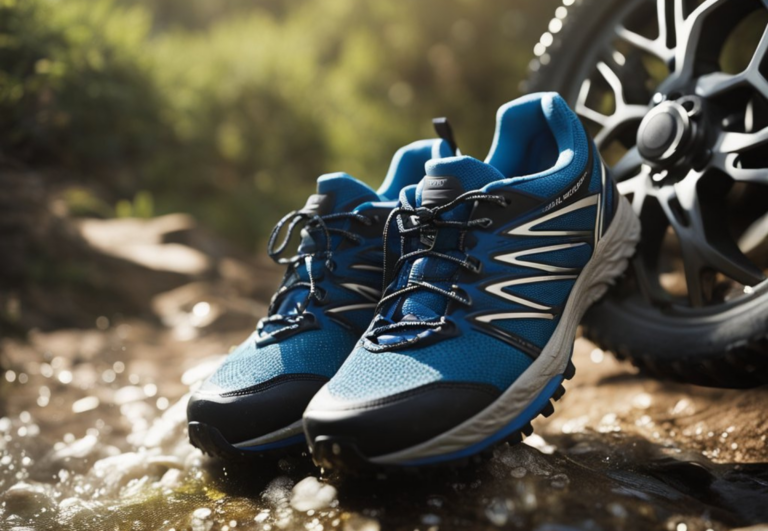When To Replace Running Socks (And How Long Do They Last?)
Socks used to be the least-loved gift, but the older I get, the more I appreciate a good pair of socks. Barring a very astute gift from Santa, how do you know when to replace running socks?
Runners should replace their running socks every 3 to 6 months. Holes, blisters, and persistent smells mean it’s time to replace your socks. When purchasing new running socks, look for high-quality, moisture-wicking materials. To increase the longevity of running socks, consider hand washing instead of running them through the washer and dryer.
Keep reading for a comprehensive discussion about the importance of frequently replacing your running socks as well as the tell-tale signs that it’s time to throw your current pair in the garbage.
Why replacing running socks is important
How do runners know that replacing their socks isn’t more than some sort of hoax to take their money? Why is it so important?
Replacing running socks is important for avoiding blisters as well as athlete’s foot.
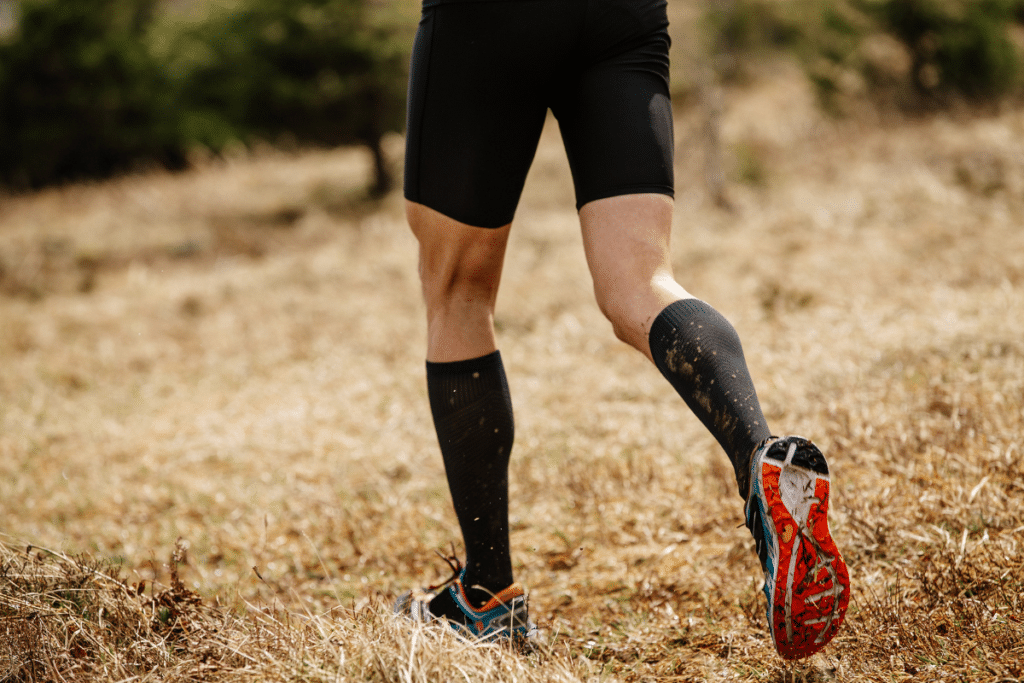
If there’s one thing I hate more than anything, it’s a blister on my foot. Blisters are ultra painful, and they take what feels like an eternity to heal. Replacing your running socks helps to avoid the development of blisters.
Over time, we wear our socks down by continually stressing the same points over and over again. When they become excessively worn down, there is no barrier between our feet and the fabric of our shoes.
Replacing your socks before they are in poor shape helps avoid this.
Additionally, replacing running socks can help avoid the development of athlete’s foot, an annoying foot fungus. It grows in humid areas and causes a painful infection of the foot.
Replacing running socks and keeping them clean is a great prevention strategy.
Benefits of replacing running socks
In my opinion, the importance of running socks is often understated. We place nearly all of our emphasis on choosing the right shoes but neglect our socks.
We should be replacing our socks frequently with high-quality, supportive running socks. Why?
The benefits of replacing your running socks regularly are practically endless. Runners who replace their socks can avoid suffering from blisters and enjoy added cushioning for a more comfortable run, as well as alleviating the nasty smell of sweaty feet!
Old socks get worn out and cease to do their job properly. Replacing your socks frequently helps prevent blistering that comes from worn-down socks.
Another drawback of old socks is that they end up getting stretched out. Replacing the old with the new provides added cushioning and possible arch support depending on the socks you choose.
Last but not least, old socks tend to accumulate some seriously smelly odors. When cleaning them isn’t enough to get the job done, replacing your socks is the way to go.
Signs that it’s time to replace running socks
While I recommend replacing your running socks every 3 to 6 months, that isn’t necessarily a cut-and-dry rule. Sometimes, it may be sooner than you expect.
Look out for these signs to determine whether or not your socks need to be retired:
- Holes in your socks
- Constant blisters
- Visibly stretched out
- Persistent odors
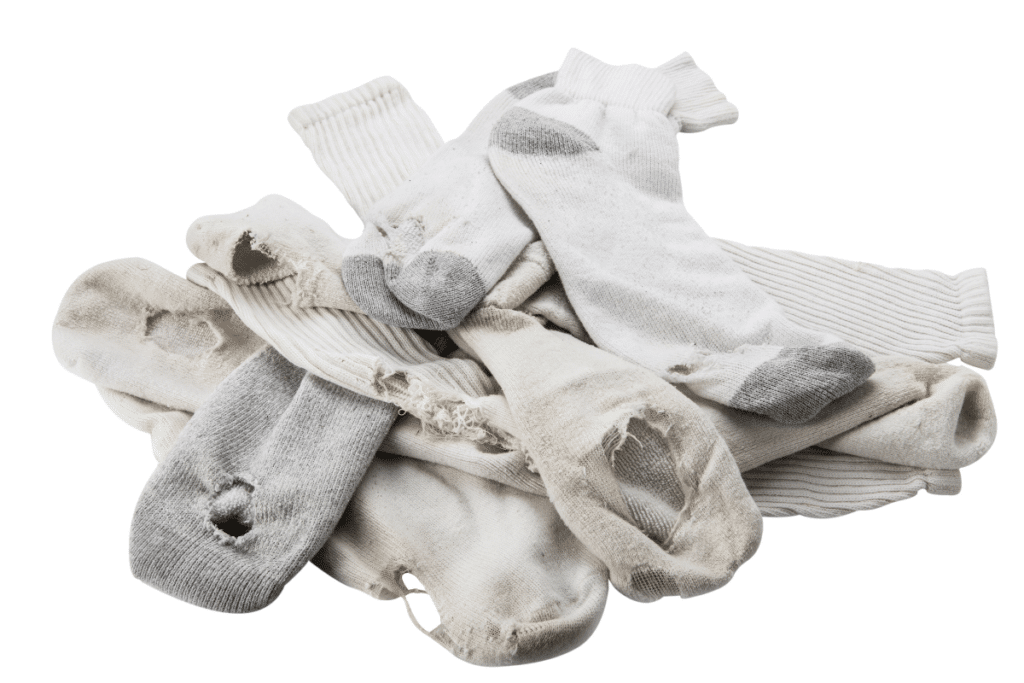
Let’s take a look at each of these signs in more detail.
Holes in your socks
They’ve got to go if you have a big, gaping hole in the bottom of your sock.
Holes in your socks indicate it is time to replace your running socks. Holes result from constant wearing that breaks down the threads until they have completely deteriorated.
Finding holes in your socks is a sign that you have worn the life out of your socks.
When holes arise, that means the threads have been entirely worn out over time. Replace them for a more comfortable fit.
Constant blisters
As I mentioned earlier, blisters from running are just downright miserable.
Developing blisters may be a sign that you need to replace your running socks.
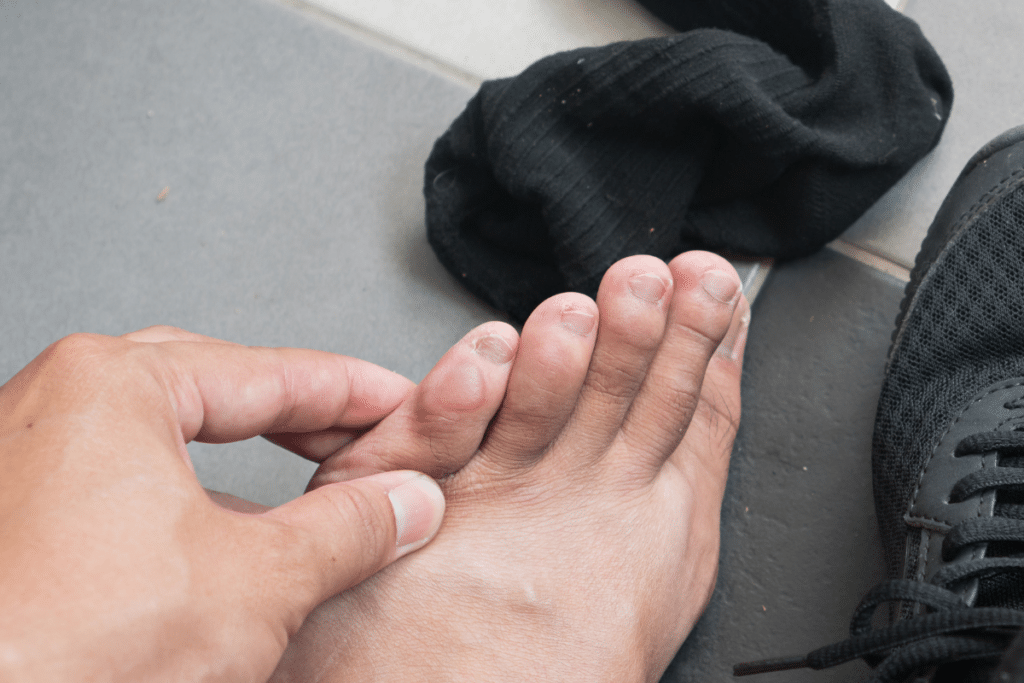
One of the main jobs of your running socks is to protect your feet from any unwanted friction and resulting discomfort.
When you begin to start blistering, this is a tell-tale sign that your socks have been worn down to the point that they no longer protect your feet from rubbing against the interior of your shoe.
There’s a good chance that replacing your socks will alleviate this issue.
Visibly stretched out
As your socks begin to stretch more and more, you may want to consider replacing them.
Runners should replace their socks when they notice they are beginning to stretch more than usual.
A sign of the times can often be the state of the elasticity in your socks. When you get running socks initially, they should fit snugly and hug your feet.
Over time, from running and from washing, socks lose this elasticity. Consider replacing your socks to regain the benefits of compression from your socks.
Persistent odors
While your shoes are often the culprit of horrendous odors, don’t underestimate your socks!
Persistent odors may signal that it is time to replace your socks. Repetitive usage and sweat can cause irreparable smelly socks no matter how well you wash them.
Running in your socks is bound to get them dirty and smelly; that’s just the name of the game.
However, if the smell persists after deep cleansing, tossing your socks and buying new ones is the best course of action.
How long do running socks last?
While every case will be different depending on your sock brand and material, how long do running socks typically last?
Running socks are estimated to last between 3 and 6 months. Durable socks will fall on the longer end of the spectrum, while thinner socks may deteriorate more quickly.
Truth be told, there isn’t one number or length of time that definitively defines the lifespan of a running sock in the way that running shoes have a specific mileage limit.
A fair estimate is 3 to 6 months; however, yours could break down quicker or last longer depending on various factors.
Look for the signs we discussed earlier to determine whether or not your socks need to be replaced! The most obvious are blister development or gaping holes in your socks.
How to replace running socks
When the time comes to ditch your old pair and buy some new socks, how exactly should runners go about this process?
Runners should try on running socks of different materials and cuts when it is time to replace an old pair.
There are two important components to running socks: materials and cuts.
When replacing running socks, it’s important to try on a wide variety of socks to get a feel for what you like best.
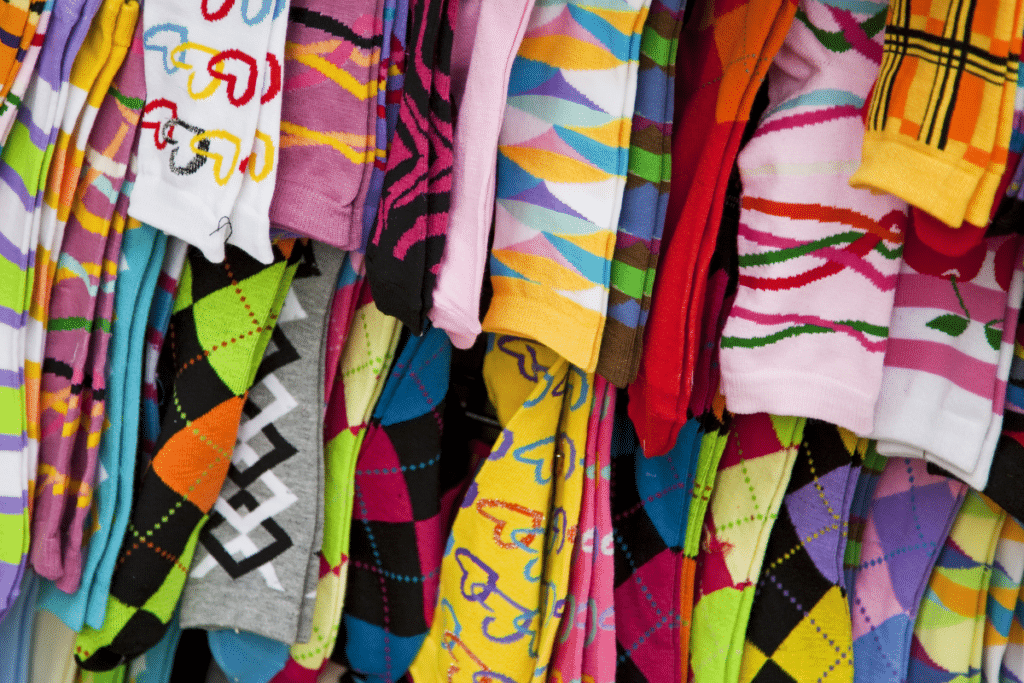
Head over to your local running store for a great selection of socks and knowledgeable assistance.
Don’t be afraid to go outside the box when choosing your new favorite running socks. Ultramarathoner Courtney Dawaulter has broken records in her toe socks!
Choosing the right type of running socks
Choosing a well-constructed pair of running socks can make all the difference in their comfort level as well as how they endure your running habits.
Don’t skimp on your running socks! Carefully curate your socks based on your preferred material and various extra features. I highly recommend steering clear of using everyday socks for running.
Before I break down the various materials and cuts, I cannot harp on this enough: don’t wear everyday cotton socks for running! Not only are they bound to get grimy and disgusting, but they aren’t built for the wear and tear of running.
Now for the most important part of choosing new socks: materials. While there are more options than I know what to do with, here are the best options along with a short breakdown of each:
- Merino wool – Great moisture-wicking properties, resistant to odors from smelly feet, and highly durable.
- Polyester – Lightweight yet strong fibers, resists odor with high breathability.
- Nylon – Fast drying, moisture-wicking, can even provide arch support and cushioning!
- Ingeo – Environmentally friendly production, odor resistant, but not as durable as other materials.
Aside from materials, consider buying socks with extra features such as seamless stitching and blister prevention.
How to care for new running socks
So, you dropped a boatload of money on some high-quality running socks. Taking care of them is crucial to ensuring you get your money’s worth.
Taking care of your running socks comes down to self-grooming and the way you clean your socks. Keep your toenails tame and either wash your socks by hand or cold and gently in the washing machine.
Before we can even talk about the sock, we have to address those gnarly toenails. Trim them and keep them trimmed! Long, pointy toenails can catch on sock threading and tear them apart quicker than you’d expect.
With that out of the way, we can focus on how to properly wash your running socks. It is a similar process to washing all your other running gear.
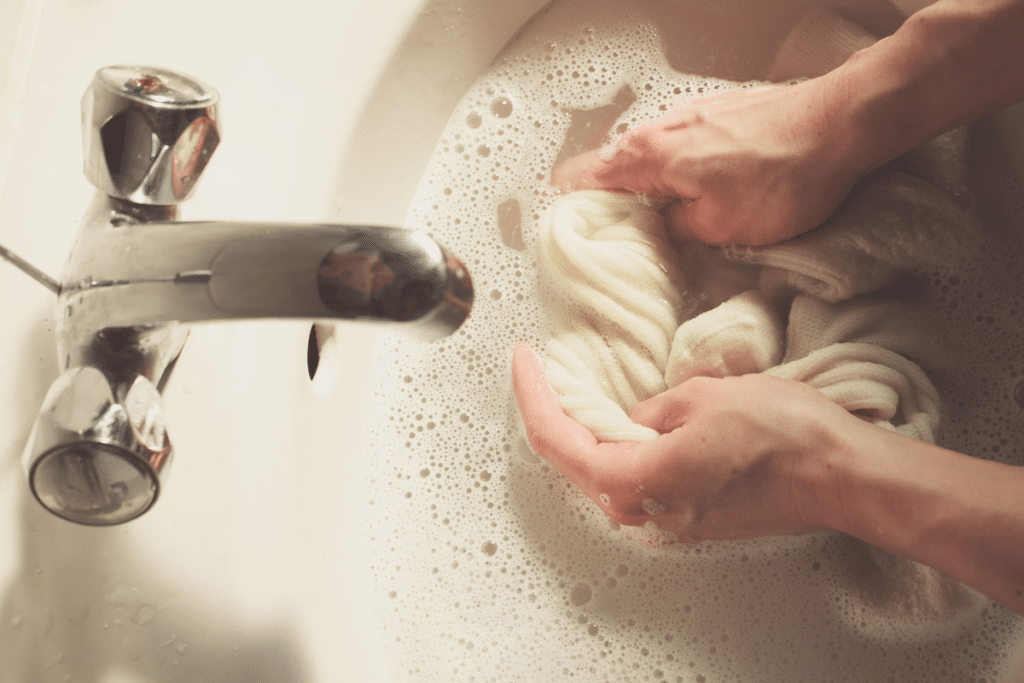
As with other clothes, hand washing is preferable because it is most gentle on the materials. However, I realize that is time-consuming and ultimately unrealistic.
Washing in the machine should be done with cold water on a gentle setting. Follow this with airdrying rather than a dryer.
Avoiding excessive heat is crucial to preserving your socks.
Summary of when to replace running socks
On the surface, replacing your running socks seems like a simple ordeal. Today, we learned there are more considerations than one might think.
Here is a short synopsis of everything we covered!
Why should I replace my running socks? You should replace your running socks to avoid blistering and athlete’s foot.
What are the benefits of replacing running socks? Avoiding blisters, adding comfort, and alleviating smelly odors.
What are the signs that I should replace my running socks? If you have holes in your socks, are suffering from blisters, notice your socks are stretched out, or are really stinky, it’s likely time to get a new pair.
How long do running socks last? Three to six months, depending on material and care.
How do I replace my running socks? The best way to replace your running socks is to go to a local store where you can try socks on and discover your preference.
How do I choose the right type of socks? Buy running socks made of merino wool or synthetic materials like polyester or nylon. Consider looking for seamless socks with blister-prevention features.
How do I care for my running socks? First of all, take care of your feet. As for the socks, either hand washing or a gentle wash with cold water in the washing machine will do the trick.

